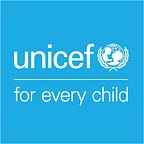Displaced in South Sudan
Six years after independence, the hopes and dreams of this fledgling nation have been shattered by armed conflict.
Fighting in South Sudan has displaced more than four million people and inflicted unthinkable hardship and suffering. When clashes broke out in Wau in June 2016, thousands sought shelter at the United Nations base on the edge of town and at St. Mary’s cathedral. As of June 2017, 48,000 people live between the two sites, unable to return home, relying on aid agencies for their most basic needs.
Shelters housing internally displaced persons dot the landscape of what a year earlier was an empty field in the Protection of Civilians (PoC) site next to the United Nations base on the edge of Wau. Around 39,000 people live here — one of six such sites in South Sudan.
Living conditions in the PoC site are cramped — it is the most densely populated of the PoC sites in South Sudan, and a second round of violence which hit Wau in April swelled the population by a further 10,000 people.
Limia Rabi (left) arrived with her nine-month-old daughter (centre), her mother (right) and seven other relatives at the camp in April. They share a space of around three metres by two metres. Around 63% of the population in the PoC site are children.
In an area of the camp previously used for food distributions, groups of people live in the only space they could find, sleeping outside with little shelter save for material draped from poles to shield them from the sun.
“Soldiers came and started shooting people,” says Antenate, who walked for two days to reach the camp, as she sits with three of her five children. Her brother, husband, and uncle were all shot. “We had nothing. Everything you see here we got here,” says Antenate of her few possessions.
Across town to the south east of the PoC site, 8,800 people are sheltering on the grounds of St. Mary’s cathedral.
“In less than five hours, we had more than 8,000 people come,” says Father John Vonjo, following renewed violence in April. Some have since left the cathedral for the PoC site.
Theresa and her four grandchildren have lived in this spot, under a tarpaulin strung up over the terrace of a church building, since they arrived on 10 July 2016.
“Our house here in town, all the iron roofing, the doors, they were all removed,” says Theresa of her former home.
“We used to get food but there hasn’t been any for the last three months,” says Theresa “if we get food, we give it to the children.” An estimated 1.1 million children in South Sudan are acutely malnourished with 290,000 suffering from severe acute malnutrition.
Children play in a classroom at the cathedral, which families use as a shelter to sleep in at night. More than 70% of children in South Sudan are not receiving an education, the highest proportion of out of school children in the world.
At the only primary school in the PoC site, students look at their workbooks. More than 2600 pupils are enrolled at the UNICEF-supported school and there are two shifts of classes during the day in order to accommodate more children, yet for every teacher there are 100 students.
Many children in the camp display signs of trauma, having witnessed horrific violence. UNICEF supports psychosocial programmes at a Child Friendly Space in the PoC site in order to help children cope and provide them a sense of normality.
Cholera has reached many parts of South Sudan, and staff in the camp are working to prevent its spread. As the rainy season approaches, drainage is vitally important to ensure sanitary living conditions in the PoC site. UNICEF and partners are working on sanitation, hygiene and drainage in the camp.
A counsellor from a partner NGO advises mothers on the importance of breastfeeding and hygiene during a UNICEF-supported nutrition screening session for children under the age of five at the health centre in the PoC site.
At the UNICEF-supported International Medical Corps clinic, a camp resident is treated for malaria. Some 29% of people at the PoC site have been diagnosed with malaria.
Many of the displaced in Wau, including at St. Mary’s cathedral, live outside without mosquito nets to protect them from malaria, which continues to be the leading cause of disease for internally displaced persons in South Sudan.
Sixteen-year-old Asunta stands outside the small bakery she runs in the camp at St. Mary’s Cathedral. Asunta and millions of other South Sudanese children like her continue to bear the brunt of the conflict and collapsing essential services.
Learn more about UNICEF in South Sudan.
